
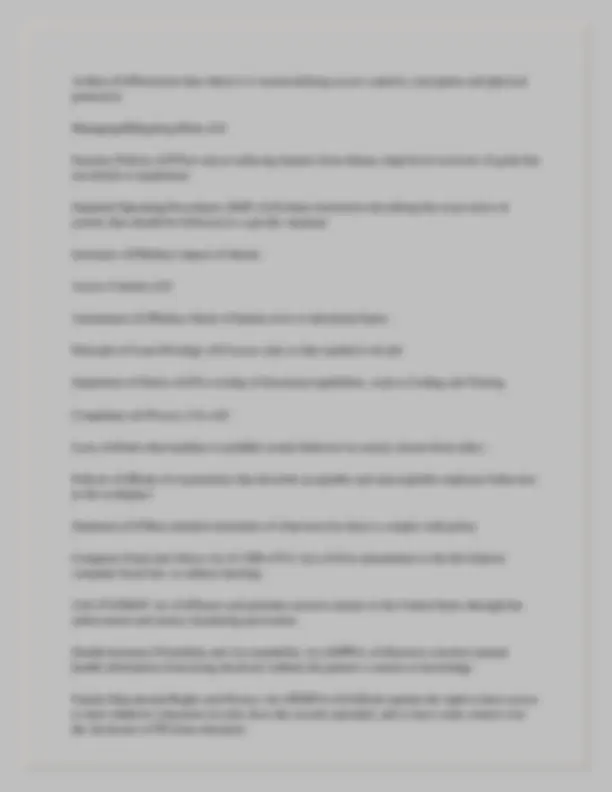
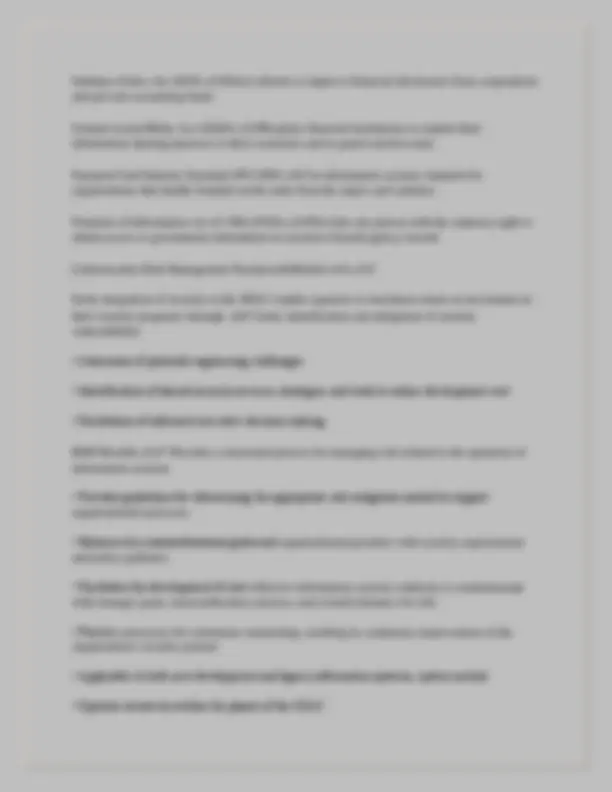
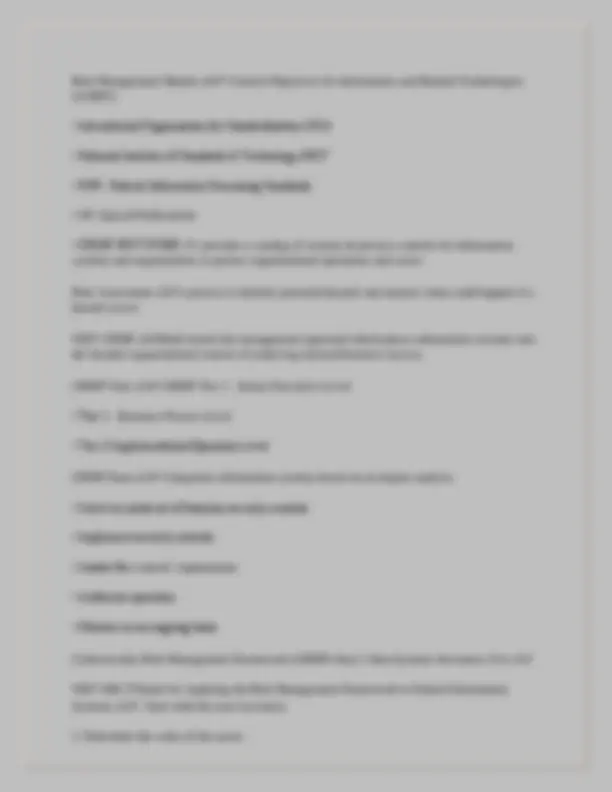
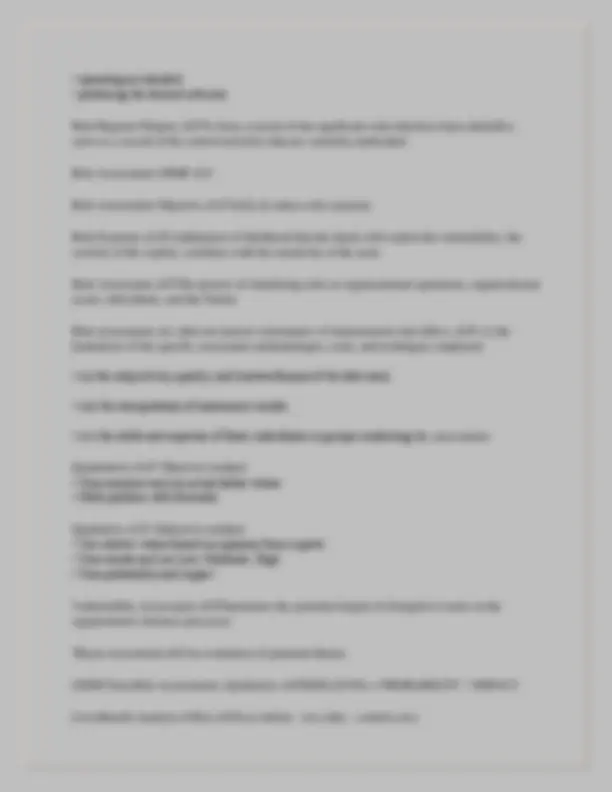
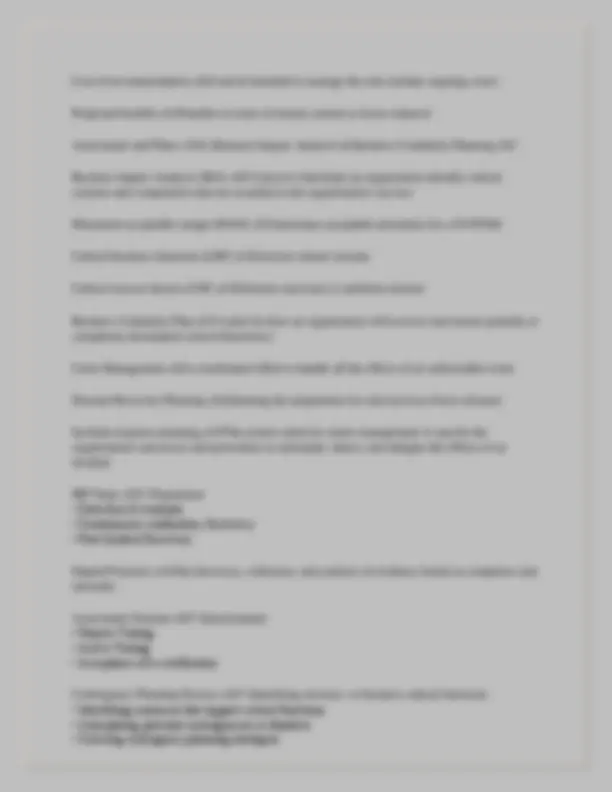
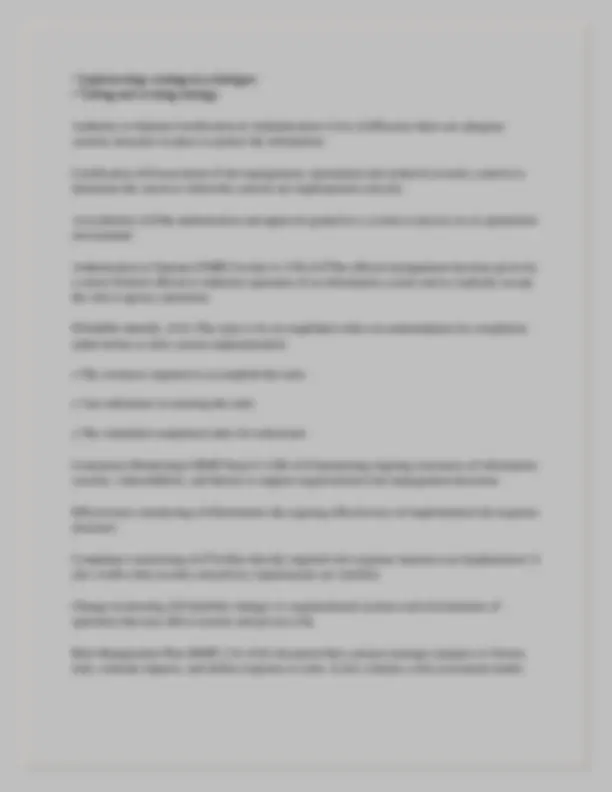


Study with the several resources on Docsity

Earn points by helping other students or get them with a premium plan


Prepare for your exams
Study with the several resources on Docsity

Earn points to download
Earn points by helping other students or get them with a premium plan
Community
Ask the community for help and clear up your study doubts
Discover the best universities in your country according to Docsity users
Free resources
Download our free guides on studying techniques, anxiety management strategies, and thesis advice from Docsity tutors
A comprehensive overview of cybersecurity risk management, covering key concepts, principles, and frameworks. It explores the importance of risk management goals, confidentiality, integrity, availability, and accountability in cybersecurity. The document delves into various aspects of risk management, including vulnerability assessment, threat identification, and risk mitigation strategies. It also discusses relevant laws, policies, and standards related to cybersecurity, such as the computer fraud and abuse act, hipaa, and ferpa. Additionally, the document highlights the nist cybersecurity risk management framework (crmf) and its application in managing cybersecurity risks.
Typology: Exams
1 / 10

This page cannot be seen from the preview
Don't miss anything!







Risk Management Goal ✔✔To maximize the output of the organization while minimizing the chance for unexpected outcomes Confidentiality ✔✔Preventing unauthorized disclosure of information Integrity ✔✔Ensure information is not modified or destroyed Availability ✔✔Available when needed Accountability ✔✔Ability to trace activities to responsible source Vulnerability ✔✔weakness in an information system Loss ✔✔Results in a compromise to business functions or assets that adversely affects the business Data Breach ✔✔An event in which an individual's information is potentially put at risk Data Breach Causes ✔✔Malicious or criminal attack, system glitch, or human error Personally Identifiable Information (PII) ✔✔Any information about an individual maintained by an agency, including any information that can be used to distinguish or trace an individual's identity Threat ✔✔Any activity that represents a possible danger Risk Management Principles ✔✔• Governance framework is important
Sarbanes-Oxley Act (SOX) ✔✔Strict reforms to improve financial disclosures from corporations and prevent accounting fraud Gramm-Leach-Bliley Act (GLBA) ✔✔Requires financial institutions to explain their information-sharing practices to their customers and to guard sensitive data Payment Card Industry Standard (PCI DSS) ✔✔An information security standard for organizations that handle branded credit cards from the major card schemes Freedom of Information Act of 1966 (FOIA) ✔✔Provides any person with the statutory right to obtain access to government information in executive branch agency records Cybersecurity Risk Management Framework/Models (4A) ✔✔ Early integration of security in the SDLC enables agencies to maximize return on investment in their security programs through: ✔✔• Early identification and mitigation of security vulnerabilities
Risk Management Models ✔✔• Control Objectives for Information and Related Technologies (COBIT)
Risk Mitigation ✔✔Focus on not trying to eliminate the risk but to reduce the risk exposure to an acceptable level NIST 800-53 R4 ✔✔• Security controls are organized into 18 families